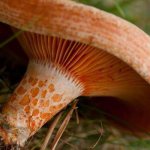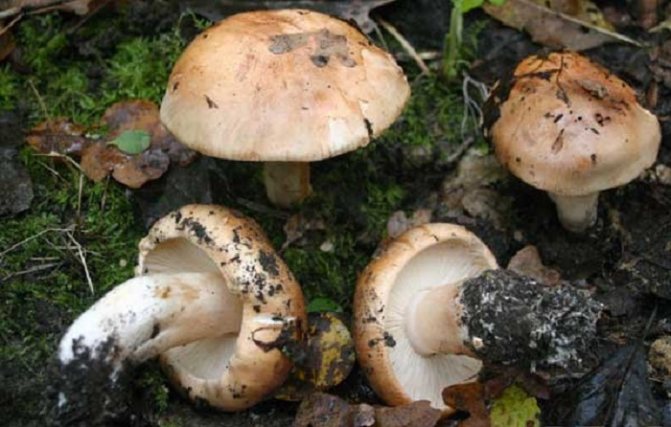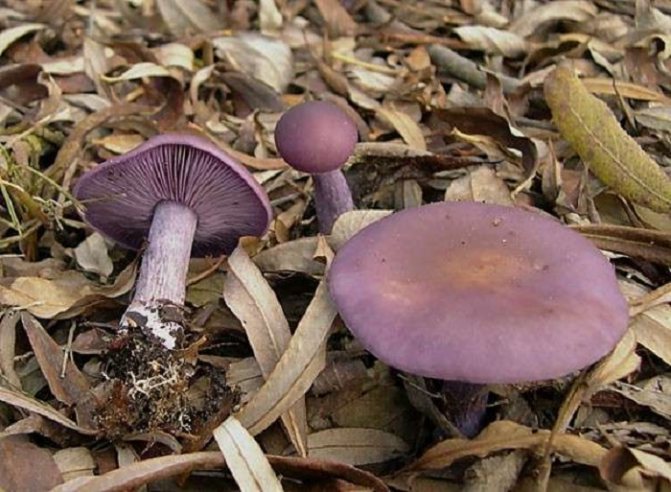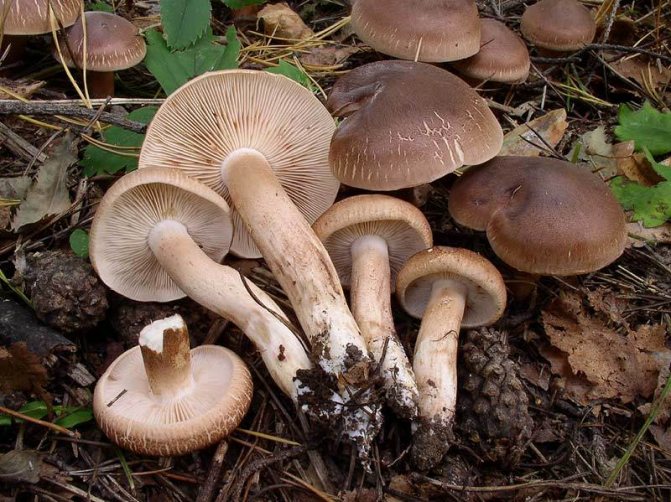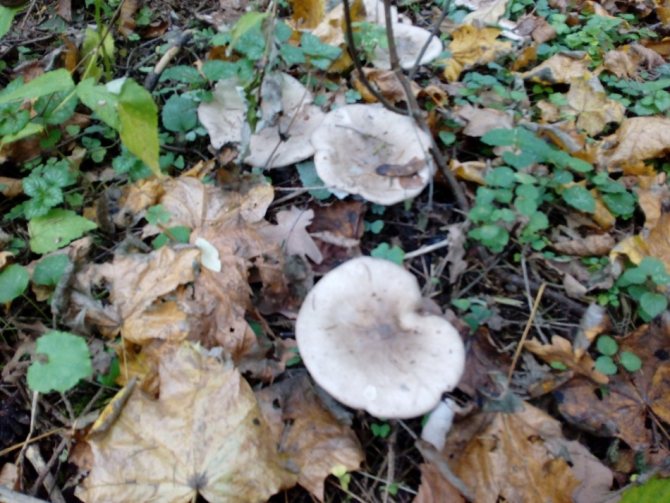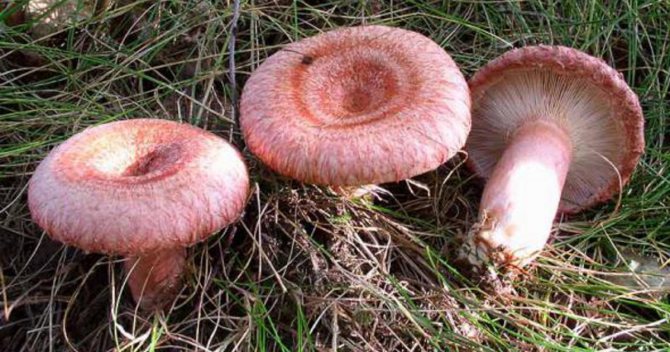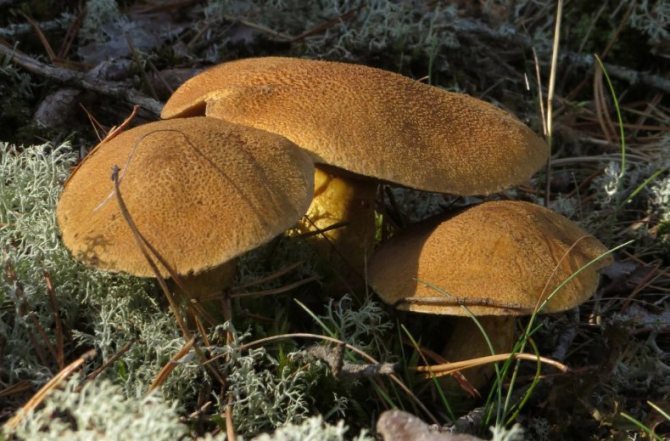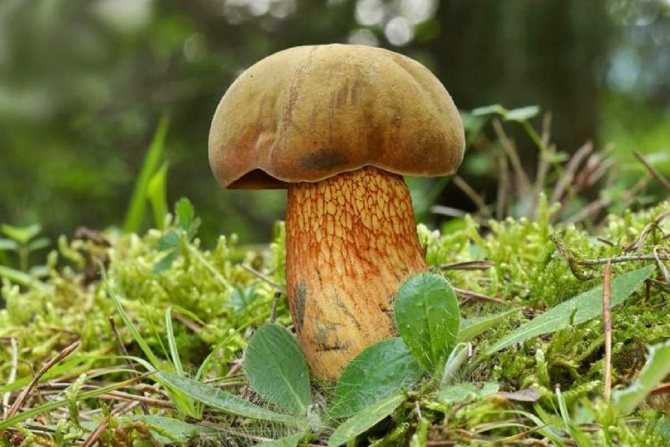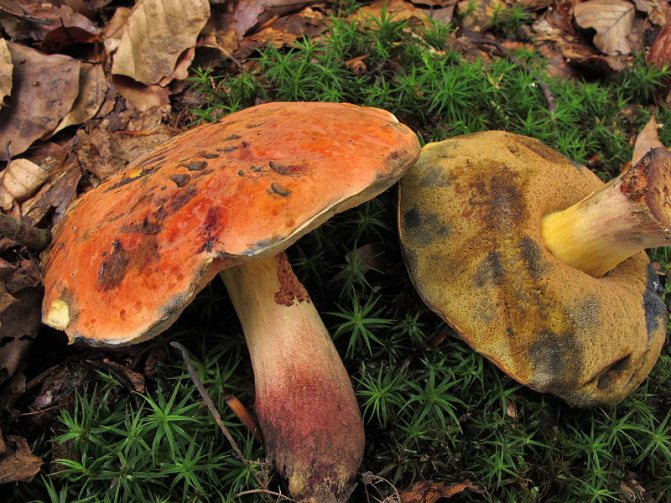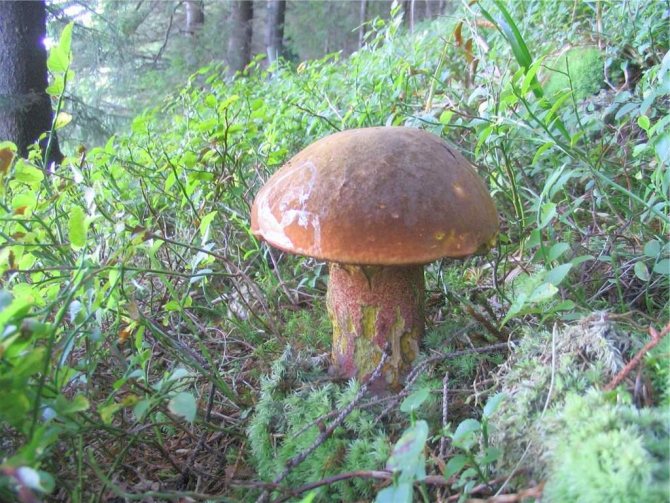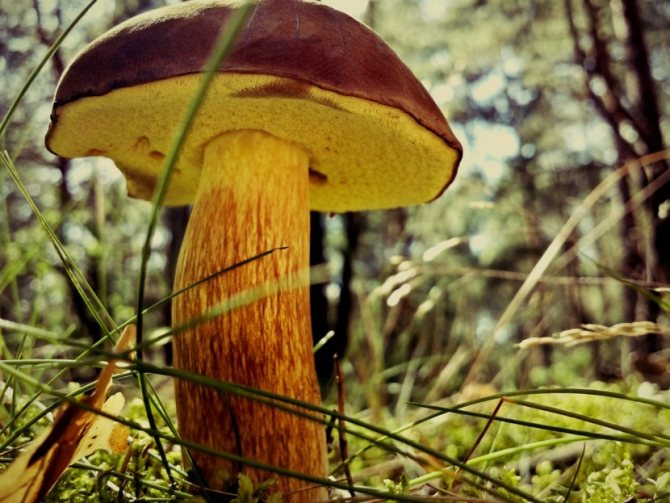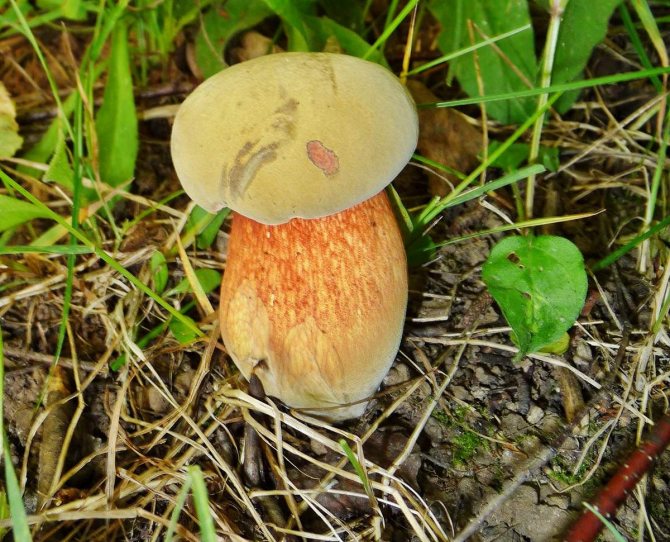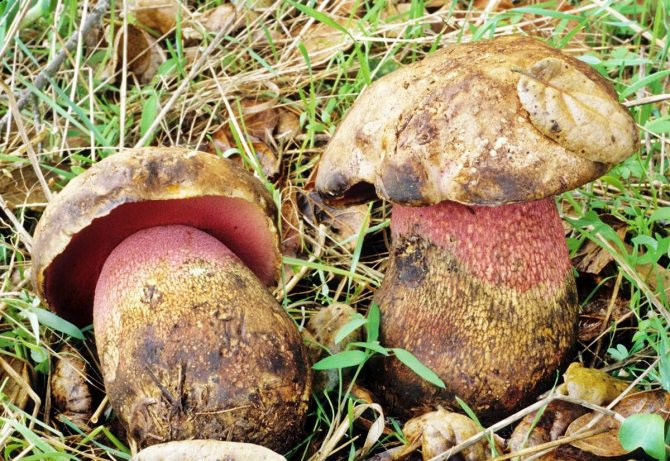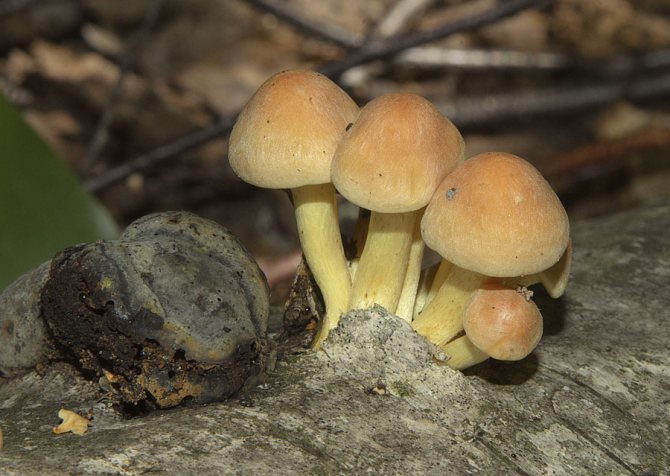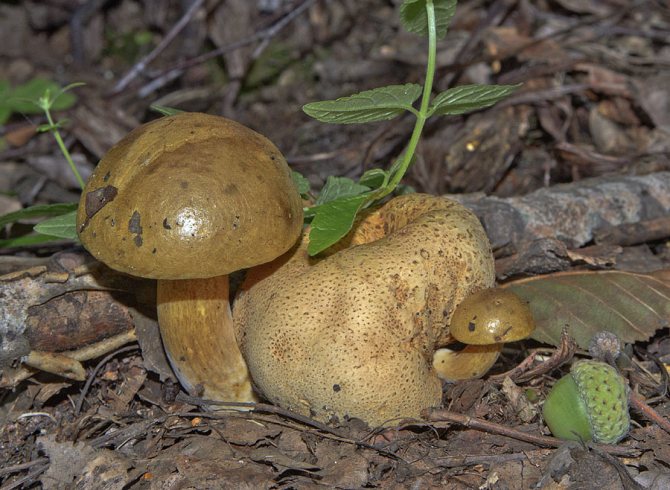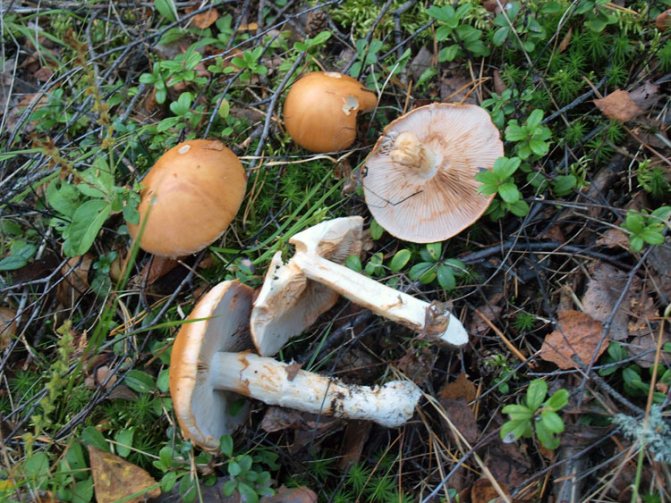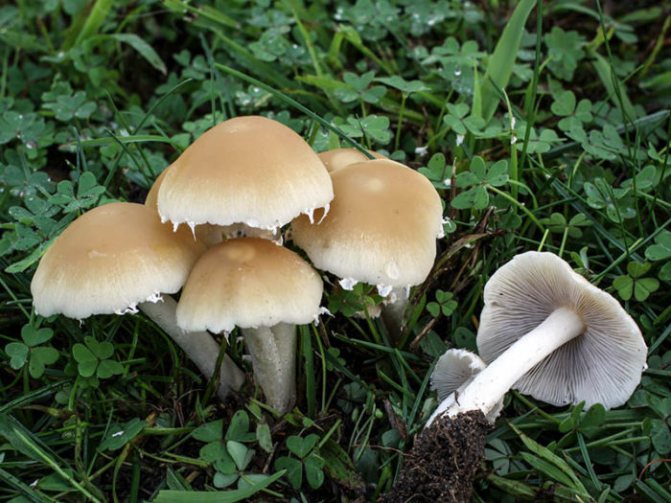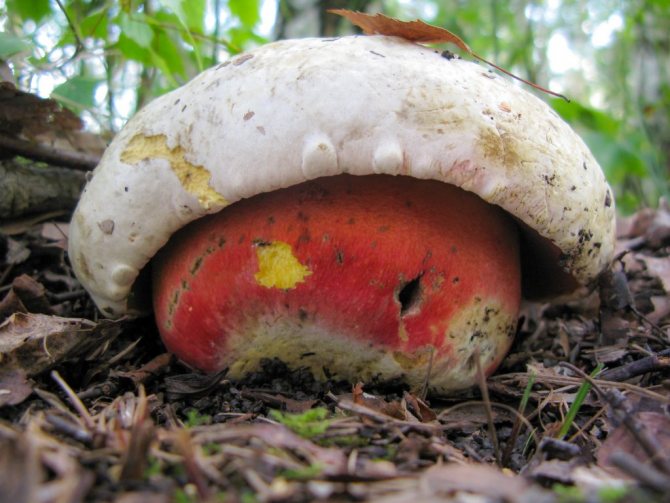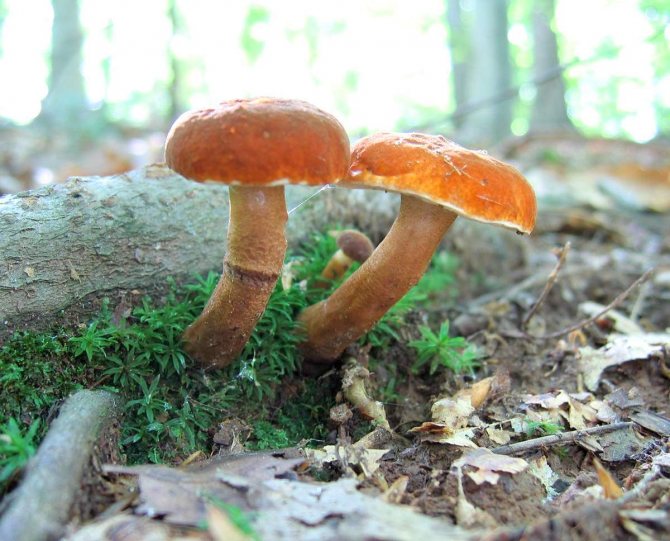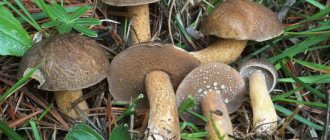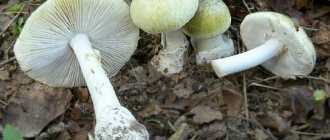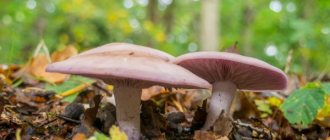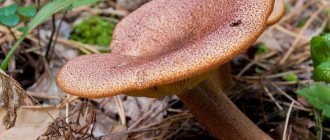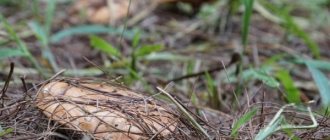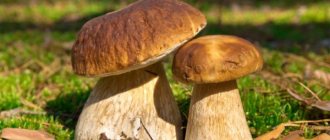One of the most popular mushrooms in our forests is boletus, so many people have a stereotype in their minds since childhood that an edible mushroom should be brown. In reality, of course, this is not always the case: not all edible mushrooms have a brown cap or leg, and not all mushrooms of this color are edible.
The variety of brown fruits in our forests can prevent an inexperienced mushroom picker from distinguishing an edible mushroom from a poisonous one, therefore, going into the forest, it is worthwhile to study well exactly those species of this color that bear fruit in the selected area.
Features of lamellar mushrooms
Unlike spongy, caps of lamellar mushrooms have a spore-bearing hymenophore in the form of radial plates that diverge from the stem to the edges of the cap. The shape of the upper part of the fruiting body can be different, depending on the species. Sometimes the caps look like concave cones, change during the maturation of the mushroom, or fit snugly against the stem. Some specimens have a thin film covering the young fruiting body as it grows. Over time, it breaks and forms a specific sac at the base of the leg - a volva. In addition to this common shell, there is also a private one - it covers the young spore-bearing layer until the spore ripens. Then it breaks and a belt is formed under the cap.
The fruit body of these representatives of the mushroom kingdom is fragile and breaks easily. The stem can be hollow or dense, but much thinner than that of the spongy congeners. When cut from the fruiting body, milky juice is often released, in the absence of its types are called breadcrumbs - they dry out in the sun, and do not rot.
The range of colors is widely presented: it includes light, lilac, brown, yellow and red tones.
Many delicious lamellar mushrooms have poisonous counterparts, differing only in color or smell. Most commonly, the edible species have a pleasant forest scent.
All lamellar species are found in wooded areas, in fields, parks and gardens, where sandy and sandy loam soil with a high level of moisture and the presence of dead wood and deciduous compost prevails. Some of them are classified as parasitic because of their ability to destroy living wood.
Irina Selyutina (Biologist):
You already know that you can determine whether a mushroom belongs to a certain group simply by looking under the cap. In lamellas, special formations are located there - thin plates on the surface of which spores ripen. The color, shape and location of the plates are varied and depend on the type of fungus.
All lamellar fungi belong to the highest fungi of the class Basidiomycetes, order Agaric (Lamellar). Most of them are characterized by the presence of annual fruiting bodies, both fleshy and leathery.
This group of mushrooms is lamellar, the most famous and popular among lovers of "quiet hunting", but unfortunately the status of "noble" does not belong to them because of the large number of inedible representatives characteristic of them.
The collection of the first lamellar mushrooms begins in March and ends in late autumn. Several species and their breeding options are grown in industrial and home conditions.
Ginger real
Sometimes he is also called the gourmet milkman.It belongs to lamellar mushrooms, completely colored in orange. A smooth and shiny cap of this type in diameter can reach from 4 to 18 centimeters. Its surface, which has brown spots, can be sticky and unpleasant to the touch in wet weather. Frequent and thin plates, orange, like the whole mushroom, can turn slightly green when pressed.

The leg of this saffron milk cap is short (up to seven centimeters) and thin (two centimeters in diameter), can be covered with a soft light fluff. The firm flesh also has an orange color that turns green when broken. The gourmet miller is often found in a pine or spruce forest, where it hides in dense grass or among moss. Growing season: July to October.
Edible mushroom species
They have an unstable consistency and often fall apart during prolonged exposure to high temperatures.
The palatability of edible lamellar mushrooms is highly appreciated by mushroom pickers, although spongy specimens are considered more delicious. They are used for pickling, frying, drying, but rarely for boiling. From a culinary point of view, unfortunately, only honey mushrooms are suitable for making soups.


Mushrooms are prized for their taste
Delicious fruiting bodies differ in their appearance and place of growth. Data on them are included in the table.
| Name of the edible mushroom | External description of the fruiting body of the lamellar fungus | Description and characteristics of the pulp | Growing places |
| Common chanterelles | Concave cap with uneven edges, fuses with the stem. The whole mushroom is orange-yellow in color. The hymenophore is represented by thick pseudo-plaques. | The dense pulp has a yellow color with a sourish taste, the smell of dried mushrooms prevails. | Deciduous and coniferous, mixed forests. |
| Ryzhiki | Slightly concave cap with edges bent inward, tightly fuses with the leg. The color ranges from gray-orange to brown-orange, with rings on the top. | Nice orange cut, but turns green quickly when crumpled. Has a subtle fruity aroma and aftertaste. | Coniferous pine forests, border area with mixed pine forests. |
| Summer, autumn mushrooms | Convex cap part on a thick stem, which becomes flatter in adulthood. In the presence of a belt under the hat (the remainder of the private bedspread). The upper part (cap) has color variations from whitish-cream with scales to brown. The leg is light, also scaly, darkening closer to the ground. | Soft, light brown, has a strong and pleasant forest aroma and taste. Does not boil over when cooking. | Deciduous forests, stumps and rotten trees, gardens with partial shade. |
| Russula | Spherical, hemispherical, funnel-shaped, horizontal cap on a thick stem. the color of the lower part (hymenophore) of the fungus is white, the upper layer of the cap is brown, reddish, brown. | White and crispy, very fragile. Has a pleasant forest smell, delicate taste. | Deciduous, coniferous-deciduous forests, young plantings, swamp zone. |
| Champignon | Spherical and hemispherical caps of light and dark brown shades, thick legs of the same light color, belted (there is a ring). The plates are light, darken to brown in adulthood. | The pulp is dense, white, darkens somewhat during heat treatment. Has a pleasant mealy smell and taste. It is even consumed raw in salads. | Mixed pine forests, young deciduous plantings, fields and meadows, orchards. |
| Pink wave | A slightly concave cap with a depression in the center, pink or yellowish in color, concentric circles along the entire upper part, a slight edge of the skin. The leg is dense and strong, pink in color. | White and dense, characterized by a specific tangy taste. | Birch, oak, alder, pine, young spruce, found in swampy areas. |
| Milk white | The cap of the mushroom has a light yellow or cream shade, characterized by a concave shape with curved edges. The leg is thick, hollow, secreting acrid white milky juice. | Yellowish strong pulp with a strong fruity taste and odor. | Birch groves, oak forests, mixed forests, young conifers. Prefers sunny locations. |
Ecological groups of mushrooms
Soil mushrooms
Soil fungi are involved in the mineralization of organic matter, the formation of humus, etc. In this group, fungi are isolated that enter the soil only at certain periods of life, and fungi of the rhizosphere of plants living in the zone of their root system.
Specialized soil mushrooms:
- coprophylls - fungi that live on soils rich in humus (manure heaps, places where animal droppings accumulate);
- keratinophylls - fungi that live on hair, horns, hooves;
- xylophytes are fungi that decompose wood, among them there are destroyers of living and dead wood.
House mushrooms
House mushrooms - destroyers of wooden parts of buildings.
Aquatic mushrooms
Among them, one can distinguish saprophytes living on plant debris, parasites of aquatic animals and plants, as well as fungi that cause fouling of wooden parts of ships, piers, etc.
Parasitic fungi of plants and animals
The group of mycorrhizal symbiont fungi also belongs to them.
Mushrooms growing on industrial materials (metal, paper and products from them)
Hat mushrooms
Hat mushrooms settle on humus-rich forest soil and obtain water, mineral salts and some organic matter from it. They get some of the organic matter (carbohydrates) from trees.
The mycelium is the main part of every mushroom. Fruit bodies develop on it. The cap and the leg are made of tightly fitting mycelium threads. In the leg, all the threads are the same, and in the cap they form two layers - the upper one, covered with a skin colored with different pigments, and the lower one.


In some mushrooms, the bottom layer consists of numerous tubes. Such mushrooms are called tubular. In others, the bottom layer of the cap consists of radially arranged plates. Such mushrooms are called lamellar. Spores form on the plates and on the walls of the tubes, with the help of which the fungi multiply.


Mycelium hyphae entwine the roots of trees, penetrate them and spread between cells. Between the mycelium and the roots of the plants, a cohabitation that is beneficial for both plants is established. The fungus supplies plants with water and mineral salts; replacing root hairs on the roots, the tree gives up some of its carbohydrates to it. Only with such a close connection of the mycelium with certain tree species is the formation of fruiting bodies possible in cap mushrooms.
Inedible and poisonous lamellar mushrooms


A pale toadstool can kill a person
Mushrooms of the lamellar group unsuitable for gastronomic use have more than 30 species.
Many lamellar are small in size, differ in structural features in the form of small caps and thin long legs, feed on decaying remains of flora and fauna. Others have a specific appearance that does not allow them to be confused with edible mushrooms.
Examples of poisonous and undesirable mushrooms for use in cooking:
- Death cap: can lead to the death of a person 7-8 hours after eating. The height of the adult fruiting body is up to 15 cm, the diameter of the cap is 5-12 cm. The upper part is shiny, greenish-white or yellowish-olive, with white plates. The leg is light, with remnants of a film in the form of a torn belt and with a film bag (Volvo) at the surface of the earth. Old specimens give out an unpleasant putrid smell.
- Amanita muscaria: famous for its bright scarlet cap color with white flake scales. The shape of the upper part is semicircular at first, then unfolds into a flat one. The leg is white, thick, high, with a large girdle and the remainder of a sac (common bedspread) at its lower part.Young specimens smell good. Amanita muscaria grows in sunny places in mixed and coniferous forests.
- Fibrous fiber: representatives of the species can be found in deciduous and coniferous forests; in terms of toxicity, it is little inferior to the pale toadstool. Her hat has the shape of a bell; with age, it straightens a little and cracks. The color of the upper part varies from straw-yellow to olive-brown, the legs - from brown to brown with a mealy bloom.
- False mushrooms: differ from their edible relatives in a more saturated color range. Their convex cap has a gray-yellow tint with a transition to red in the center. The cylindrical stem is free from the girdle, also yellowish with a transition to reddish-gray colors. The pulp of the false is again gray-yellow, bitter in taste, has an unpleasant odor.
- Galerina bordered: also called false champignon. Its fragile fruiting body is translucent in the sun, has a brownish yellowish or light brown color. The cap is convex; in adult specimens it straightens (flattens), but a tubercle remains in the center. A light rim bent against the growth of the plates is clearly visible along the outer contour. The stem is thin, high, ocher-brown, with a powdery coating.
- Entoloma spring: can be found in deciduous forests and parks, also in gardens. The shape of the cap is bell-shaped or cone-outstretched, brown-gray, sticky and smooth. The stem is of medium height, flat, gray or light brown. The pulp is dense, has a damp smell, tastes bitter.
With a brown hat and a leg of a different color
Let's consider inedible and poisonous mushrooms - twins, now using the example of mushrooms, in which the cap is brown and the leg of a different color.
Pepper mushroom
The twin of moss and butter is not poisonous, but inedible. Outwardly, it is very similar to mushrooms and boletus. These brown mushrooms stand out with a bitter taste, reminiscent of hot peppers, for which they got their name. You can collect it, then dry it, grind it and use it as a spice in your home cooking.
Satanic mushroom
Double of porcini mushroom and oak tree. Has a cap measuring 8 to 30 cm in diameter, in the form of a hemisphere, which straightens out as it grows. The skin feels dry, dirty gray in color with red streaks. The leg is plump, turnip, reddish. When removing the mushroom, the pulp turns blue, and more often turns red. An adult mushroom gives off an unpleasant odor. It grows from June to the end of September in light deciduous forests of Southern Europe, southern Russia, the Caucasus, the Middle East, southern Primorsky Krai.
Light ocher webcap
Poisonous twin of a young porcini mushroom. The external difference is noticeable only in the spore-bearing layer, in the spiderweb it is lamellar. The plates are yellow at first, then become lilac.
Crested lepiota (comb umbrella)
Poisonous twin of scutellum lepiota. Found everywhere in Russia. The cap of the comb umbrella is convex at an early age, gradually opens as it grows and acquires a flat appearance. Covered with a layer of reddish brown scales. Sizes in diameter from 2 to 5 cm.
It grows in coniferous, mixed and deciduous forests, meadows, pastures, grass, lawns, and vegetable gardens from June to October. Unlike scutellum lepiota, it has a pungent, rare odor (reminiscent of rotten garlic) and an unpleasant taste.
Attention! Accidental ingestion of a comb umbrella leads to severe poisoning, characterized by vomiting, diarrhea, pain in the abdomen and head, and cramps.
Types and varieties
Yellow mushrooms are diverse, and differ among themselves not only in appearance, but also in name. You can see all the main external differences in the photo.
There are several types:
- One interesting species is popular, called Yellow Hericium. Among avid mushroom pickers, this species is also called Gidnum notched.It is famous for its pleasant fruity aroma. If you carefully study the photo of the yellow hedgehog, you can see that its cap is quite dense, with pulp. The surface of the cap is yellowish, bumpy and irregular in shape. During dry periods, the surface of the cap tends to fade. The herd's mane is characterized by a leg, the diameter of which can reach 4 cm. The leg is white, dense, in the shape of a cylinder, sometimes slightly curved. The fungus grows in coniferous or deciduous forests. Hericiums bear fruit in late summer and early autumn. These mushrooms most often grow singly, but are sometimes found in small groups. During heat treatment, the product does not change its size, which is why housewives love it. Plants have a sour taste, which is very similar to chanterelles. You can cook in any way. Famous chefs recommend frying with onions and sour cream. In folk medicine, black hairs are used to raise immunity and renew blood. Various ointments are made from these plants for the treatment of skin diseases. In the field of cosmetology, they are used to make regenerating face masks.
- Another species is the Yellow Webcap. These species have large, bright yellow caps. The hat can be up to 12 cm in diameter and has a smooth and sticky surface. Sometimes the cap is covered with a white bloom. The pulp has brown plates. Cobwebs have a leg with a height of 7 to 14 cm, it is rather thick in diameter. Most often, the cobweb can be found on calcareous clay soil. Thanks to its bright yellow hat, this representative is visible from afar, which greatly facilitates the search. In terms of taste, the cobweb is soft and delicate. Some cooks prefer pickling.
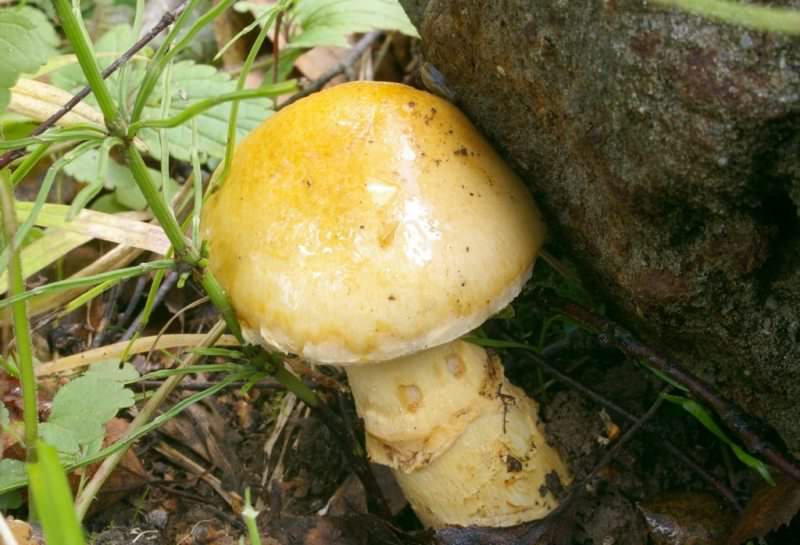

In the photo of real representatives, you can see that they all have some similarities. This is a thick leg, a hat with a bright yellow color. They have a mild and delicate taste.
Dangerous mushrooms with plates under the hat
As already mentioned, many among the lamellar mushrooms are poisonous, which in no case should be collected and consumed. The use of such mushrooms will lead to sad consequences:
- Poisonous entoloma (she is also pink-plated). A very beautiful mushroom with a thick, dense leg in the shape of a club and a large pale yellow cap with a diameter of up to 20 cm. Wide plates are light at first, then turn red. The pulp is unpleasant, with a bitter odor.
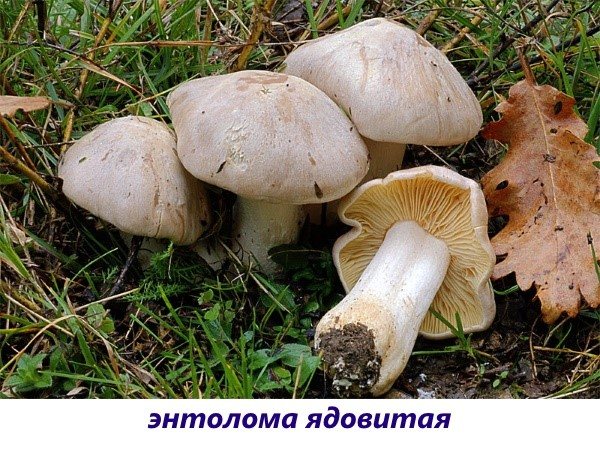

- Mayr's russula. A small cap (no more than 7 cm) is pinkish, the plates are thick, white with a slight green-gray tint. The leg is white, dense, turns yellow over time. The pulp smells like coconut, in old mushrooms it just has a sweet aroma, but with a pungent taste.


- Amanita porphyry. The brown-gray cap is convex at first, then becomes concave, covered with scales. The leg is long, ringed at the top. Light pulp smells unpleasant.


- Earthen fiber. A white hat with a lilac shade is flat, swollen in the center. The leg is thin, fibrous. The plates are light, then darken.
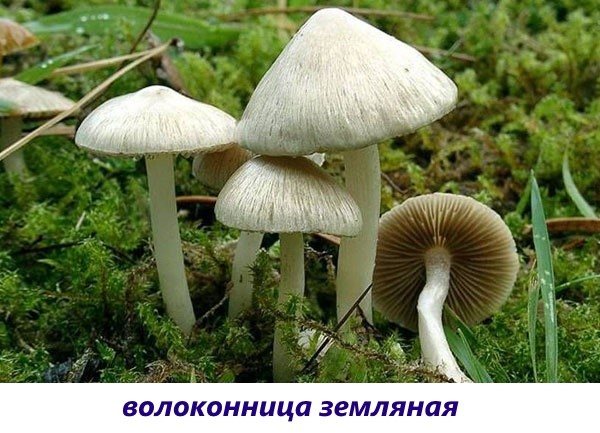

Symptoms of poisoning may not appear immediately, or even completely absent at first, but dangerous toxins will actually destroy your liver from the inside, so do not risk it and better leave such mushrooms in the forest.
Lamellar mushrooms are one of the most numerous groups, including both valuable specimens for the kitchen and the most dangerous. Be careful going in search so as not to confuse them and pass by unfamiliar mushrooms. Health is more expensive than experiments!
Edible lamellar mushrooms video
The world of mushrooms is very diverse. There are a huge number of tubular species, but there are many more lamellar species. It is very easy to determine which group a mushroom found in the forest belongs to, you just have to look under the hat. In tubulars, a dense wide sponge is always located under the cap. The shape and color of the plates will always be different for each individual species.
Since among the representatives of lamellar mushrooms there are both edible and extremely poisonous specimens, we will consider information about the representatives of this group in more detail.

